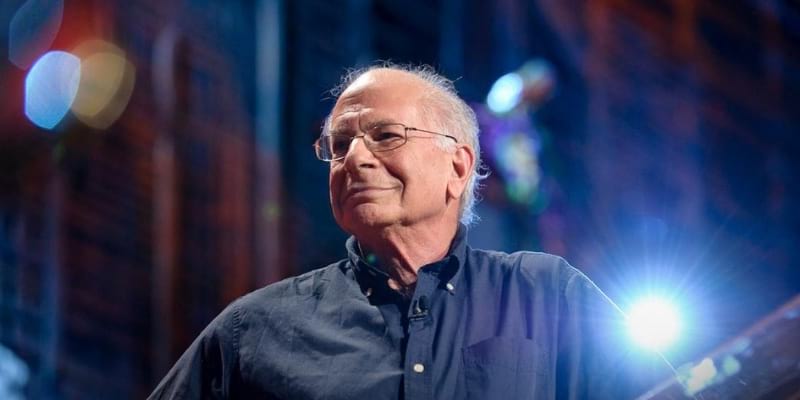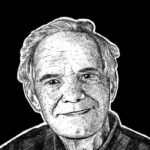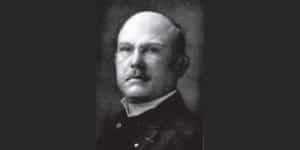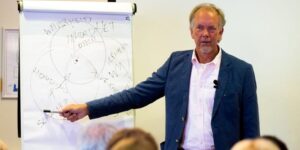Daniel Kahneman biography and books

Daniel Kahneman is a professor of psychology and emeritus Public Affairs at the Woodrow Wilson School, emeritus professor Eugene Higgins at the university of Princeton, and a partner of the Hebrew University in Jerusalem. He received numerous awards, including the Warren medal from the Society of Experimental Psychologists in 1995 and the Nobel Prize in Economic Sciences in 2002. Daniel Kahneman is also co-founder of prospect theory.
Daniel Kahneman biography
Daniel Kahneman was born in Tel Aviv, in what is now Israel, in 1934. Both his parents were of Lithuanian-Jewish descent, but he grew up in Paris. His father was taken by the nazis in the beginning of the war during what would be the first of many police raids.
Although his father was released, the Kahneman family was very uneasy during the war years. Four years after his father died from diabetes, Daniel Kahneman moved to Palestine with his family. In the same year that Palestine was to become Israel, the country experienced significant social and intellectual growth.
Education
Once settled in Israel, he began studying psychology in Jerusalem in 1954. Here, he obtained his first degree, he started a job teaching psychology, and published his first article: ‘Pupil Diameter and Load on Memory‘. This article was first published in the renowned journal Science.
In that period, Israel had a military conscription, which Kahneman spent developing his ideas about decision making, something that would turn out to be one of his masterpieces. One year after the start of his studies, in 1955, he was tasked with carrying out assessments for Israeli forces. Here, he developed his interest in cognitive behaviour.
After obtaining his degree in psychology, Kahneman and his wife moved to San Francisco where he started working as graduate student at the University of California, Berkeley. In 1961, he completed his Ph.D at the same university and was a professor there until 1970.
In the final years of his studies at the University of California, he taught seminars about the application of psychology on real-world problems. Here, he worked closely with Amos Tversky and this gave rise to what proved to be a long-standing collaboration.
Research collaboration with Amos Tversky: contribution to psychology
Daniel Kahneman spent the summer of 1969 conducting research at the Applied Psychological Research Unit in Cambridge, United Kingdom.
Amos Tversky visited for a few days on his way to the United States, and together they developed a questionnaire about intuitions on variability and statistical power of samples. After conducting the questionnaire amongst participants, they discussed the results a few weeks later when they got together in Jerusalem.
Kahneman and Tversky developed a close friendship. Kahneman describes Tversky as funny, cheerful, and incredibly disciplined. The smooth collaboration meant that they could put in hours of solid work with a great atmosphere. Kahneman describes that Amos had a remedy for everything he struggled with concerning writing and language.
Daniel Kahneman and Amos Tversky worked together at the Oregon Research Institute (ORI) in Eugene. Kahneman calls this the most productive period in his life. He and Amos published various articles in various journals. During their peak years, 1971-1981, they published a total of eight articles together. Five of these had been cited over 1,000 times at the end of 2002.
They believe they owe the success of these articles to their collaboration. Tversky and Kahneman shared the idea that, together, they had a golden goose that could lay golden eggs. The statistical report that was drawn up also demonstrated that the joint work was influential, maybe even superior.
Nobel Prize
Kahneman received the most important appreciation for his exceptional work in 2002. At this time, he was awarded the Nobel Prize in Economics. He received this prize for integrating psychological insights into economic science and in particular with regard to human judgement and decision-making in case of uncertainty.
In 1978, Daniel Kahneman married Anne Treisman and together they moved to U.B.C. In the same period, Amos Tversky and his wife Barbara settled in Stanford. The collaboration between the two researchers was fully dedicated to studying conjunction fallacy. They spent every weekend together and spoke on the phone for many hours.
Eventually, the collaboration began to diminish, something that came as a painful surprise to both of them. They had failed to realise how critically their collaboration depended on the birth of each important idea. The years went by, rather unproductively, until the moment Amos Tversky heard in 1996 that he was terminally ill and had no more than a few months to live.
They decided to work on a joint book about decision making. The ambition was to elaborate on a study from over 20 years ago. Kahneman and Tversky wrote an ambitious foreword, but already knew that there would be too little time to complete the study. Daniel Kahneman describes the period of writing the foreword as his most painful writing experience.
Famous quotes
- “A reliable way to make people believe in falsehoods is frequent repetition, because familiarity is not easily distinguished from truth. Authoritarian institutions and marketers have always known this fact.”
- “Our comforting conviction that the world makes sense rests on a secure foundation: our almost unlimited ability to ignore our ignorance.”
- “Nothing in life is as important as you think it is, while you are thinking about it”
- “If you care about being thought credible and intelligent, do not use complex language where simpler language will do.”
- “The idea that the future is unpredictable is undermined every day by the ease with which the past is explained.”
- “Odd as it may seem, I am my remembering self, and the experiencing self, who does my living, is like a stranger to me.”
- “A reliable way of making people believe in falsehoods is frequent repetition, because familiarity is not easily distinguished from truth.”
- “You are more likely to learn something by finding surprises in your own behavior than by hearing surprising facts about people in general.”
- “The confidence people have in their beliefs is not a measure of the quality of evidence but of the coherence of the story the mind has managed to construct.”
- “The easiest way to increase happiness is to control your use of time.”
- “We can’t live in a state of perpetual doubt, so we make up the best story possible and we live as if the story were true.”
Books, articles and publications by Daniel Kahneman
- 2013. Choices, values, and frames. Handbook of the Fundamentals of Financial Decision Making: Part (pp. 269-278).
- 2011. Thinking, fast and slow (Vol. 1). New York: Farrar, Straus and Giroux.
- 2006. Developments in the measurement of subjective well-being. Journal of Economic perspectives, 20(1), 3-24.
- 2004. A survey method for characterizing daily life experience: The day reconstruction method. Science, 306(5702), 1776-1780.
- 2003. A perspective on judgment and choice: mapping bounded rationality. American psychologist, 58(9), 697.
- 2003. Maps of bounded rationality: Psychology for behavioral economics. American economic review, 93(5), 1449-1475.
- 2002. Heuristics and biases: The psychology of intuitive judgment. Cambridge university press.
- 2002. Representativeness revisited: Attribute substitution in intuitive judgment. Heuristics and biases: The psychology of intuitive judgment, 49, 81.
- 1999. Well-being: Foundations of hedonic psychology. Russell Sage Foundation.
- 1992. Advances in prospect theory: Cumulative representation of uncertainty. Journal of Risk and uncertainty, 5(4), 297-323.
- 1991. Loss aversion in riskless choice: A reference-dependent model. The quarterly journal of economics, 106(4), 1039-1061.
- 1991. Anomalies: The endowment effect, loss aversion, and status quo bias. Journal of Economic perspectives, 5(1), 193-206.
- 1990. Experimental tests of the endowment effect and the Coase theorem. Journal of political Economy, 98(6), 1325-1348.
- 1989. Rational choice and the framing of decisions. In Multiple Criteria Decision Making and Risk Analysis Using Microcomputers (pp. 81-126). Springer, Berlin, Heidelberg.
- 1986. Fairness as a constraint on profit seeking: Entitlements in the market. The American economic review, 728-741.
- 1986. Norm theory: Comparing reality to its alternatives. Psychological review, 93(2), 136.
- 1983. Extensional versus intuitive reasoning: The conjunction fallacy in probability judgment. Psychological review, 90(4), 293.
- 1981. The framing of decisions and the psychology of choice. Science, 211(4481), 453-458.
- 1974. Judgment under uncertainty: Heuristics and biases. science, 185(4157), 1124-1131.
- 1973. Attention and effort (Vol. 1063). Englewood Cliffs, NJ: Prentice-Hall.
- 1973. Availability: A heuristic for judging frequency and probability. Cognitive psychology, 5(2), 207-232.
- 1972. Subjective probability: A judgment of representativeness. Cognitive psychology, 3(3), 430-454.
- 1971. Belief in the law of small numbers. Psychological bulletin, 76(2), 105.
- 1966. Pupil diameter and load on memory. Science, 154(3756), 1583-1585.
How to cite this article:
Janse, B. (2019). Daniel Kahneman. Retrieved [insert date] from Toolshero: https://www.toolshero.com/toolsheroes/daniel-kahneman/
Original publication date: 03/15/2019 | Last update: 08/22/2023
Add a link to this page on your website:
<a href=”https://www.toolshero.com/toolsheroes/daniel-kahneman/”>Toolshero: Daniel Kahneman</a>











